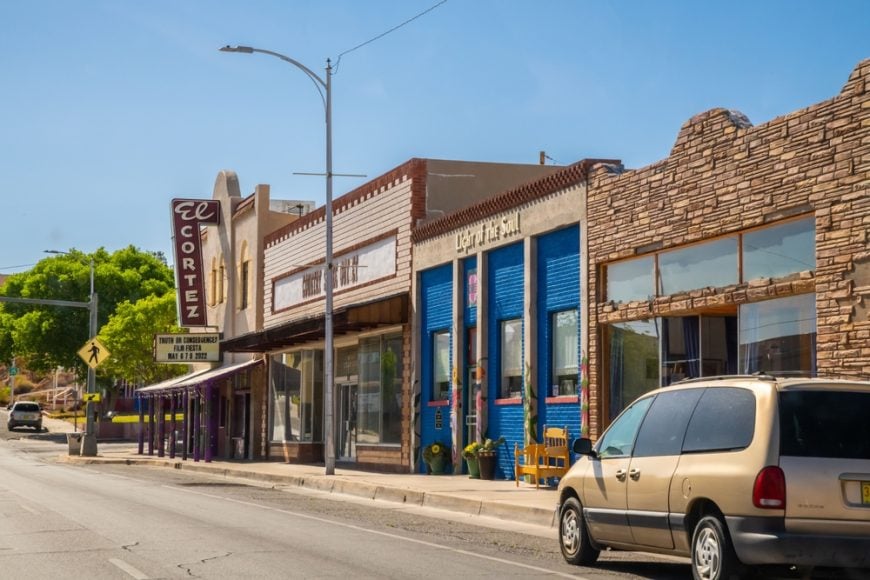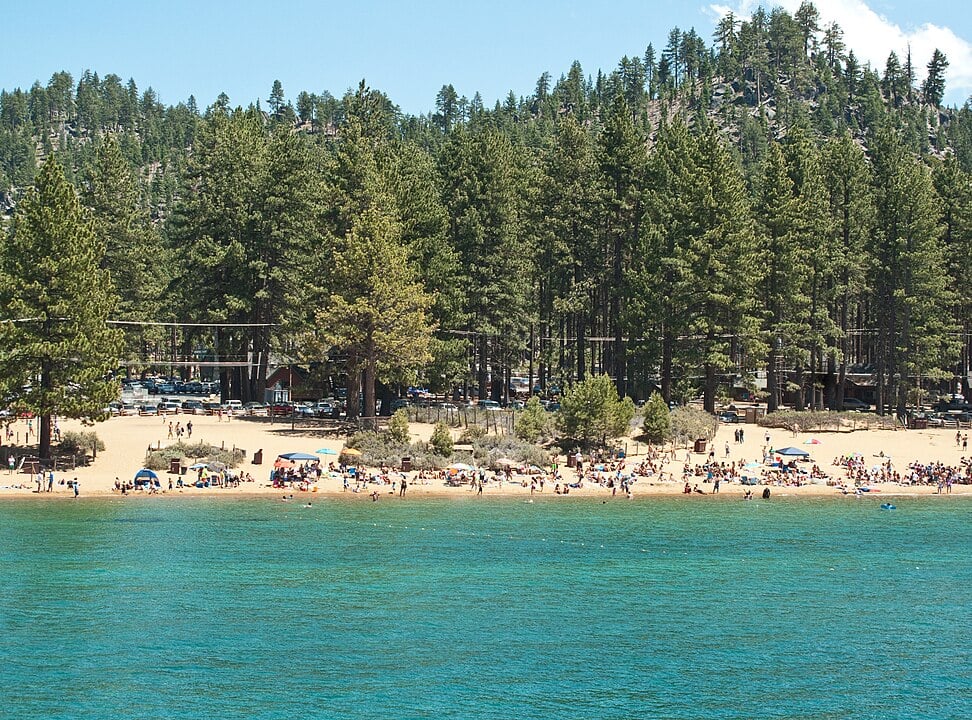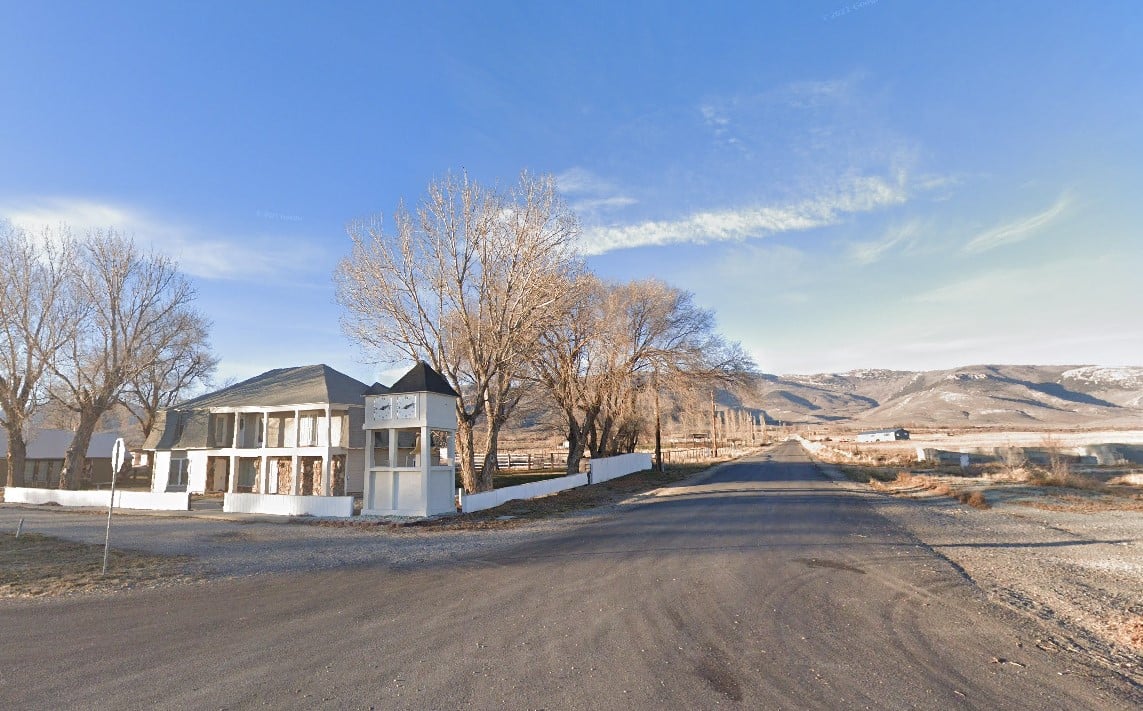Nestled within the vast expanse of the Chihuahuan Desert lie some of the most secluded and enchanting towns waiting to be explored. These hidden gems offer a retreat from the hustle and bustle of city life, immersing visitors in unique cultures, breathtaking landscapes, and rich histories. From ghost towns preserved in time to oases teeming with biodiversity, each destination provides a distinct experience amidst the desert’s tranquility. Whether you’re an adventurer seeking new horizons or someone longing for a peaceful getaway, these towns offer a glimpse into the captivating solitude of the desert. Join us as we count down ten of the most secluded towns in the Chihuahuan Desert that beckon with their untouched charm and allure.
10. Truth or Consequences, New Mexico: Hot Springs and Desert Skies

With a population of around 6,000, Truth or Consequences is a quaint town famous for its natural hot springs and laid-back atmosphere. Visitors can soak in the geothermal waters at one of the many local spas or explore the eclectic downtown area filled with art galleries and antique shops. The town thrives on tourism centered around wellness and outdoor activities, with nearby Elephant Butte Lake offering opportunities for boating and fishing. Its seclusion stems from its location in the heart of the desert, providing unobstructed views of star-filled night skies and a peaceful environment. The absence of urban noise and light pollution makes it an ideal spot for relaxation and stargazing enthusiasts alike.
Where is Truth or Consequences?

Located in southern New Mexico along the Rio Grande, Truth or Consequences sits approximately 150 miles south of Albuquerque. Its secluded nature is enhanced by the surrounding desert landscape and the distant mountain ranges that encircle the area. Accessible primarily via Interstate 25, it remains off the beaten path for many travelers, contributing to its quiet charm. The town’s remote setting amidst the Chihuahuan Desert offers a serene escape, with the journey there unveiling vast stretches of open terrain and expansive skies.
9. Fort Davis, Texas: Historical Charm in High Desert

Fort Davis is a small town with a population of about 1,200, known for its rich history and stunning high desert surroundings. Visitors can explore the well-preserved Fort Davis National Historic Site, which offers a glimpse into 19th-century military life. The town is also a gateway to the McDonald Observatory, where astronomy enthusiasts can enjoy star parties and telescope viewings. While tourism plays a significant role, the community maintains a peaceful, small-town atmosphere. Its seclusion is attributed to its location in the Davis Mountains, providing a cooler desert climate and panoramic views that are far removed from urban centers.
Where is Fort Davis?

Nestled in West Texas, Fort Davis is approximately 200 miles southeast of El Paso, accessible via a network of scenic highways. The town’s remote location in the Davis Mountains contributes to its sense of isolation, surrounded by rugged terrain and vast desert landscapes. Getting there involves traversing winding roads that reveal the area’s natural beauty, reinforcing its secluded feel. This high desert retreat offers a tranquil environment, making it a perfect destination for those seeking solitude and a connection with nature.
8. Marathon, Texas: Gateway to Big Bend with Small-Town Feel

Marathon is a tiny town boasting a population of around 430 residents, characterized by its quiet streets and welcoming community. As the northern gateway to Big Bend National Park, it serves as a convenient base for exploring the park’s vast wilderness. Visitors can enjoy local art galleries, dine at unique eateries like the famous Gage Hotel, and experience the serene desert ambiance. The town’s economy revolves around tourism and ranching, maintaining a balance between hospitality and preserving its tranquil atmosphere. Marathon’s seclusion comes from its remote location and the expansive landscapes that surround it, offering wide-open spaces and clear, starry nights.
Where is Marathon?

Located in West Texas along U.S. Highway 90, Marathon sits about 40 miles east of Alpine and 220 miles southeast of El Paso. Its isolation is heightened by the vast stretches of desert that separate it from larger cities, with the nearest commercial airport hours away. The town is accessible by car or via the Amtrak station in nearby Alpine, followed by a scenic drive. Marathon’s remote setting amidst the Chihuahuan Desert provides a peaceful retreat, where the journey itself through unspoiled terrain adds to the secluded experience.
7. Redford, Texas: Remote Living by the Rio Grande

Redford is a sparsely populated community with less than 100 residents, offering a serene atmosphere along the Rio Grande. It’s a haven for those seeking solitude, with activities centered around nature, such as bird watching and exploring the river’s edge. The area lacks commercial industries, embodying a simple lifestyle focused on agriculture and ranching. Redford’s seclusion is due to its remote location and minimal development, providing an escape from modern distractions. The quiet surroundings and the gentle flow of the Rio Grande create a peaceful environment perfect for reflection and relaxation.
Where is Redford?

Situated in Presidio County, Redford lies in the Big Bend region of West Texas, near the U.S.-Mexico border. It’s located along Farm to Market Road 170, a scenic route known as the River Road. The town’s remoteness is accentuated by the rugged desert terrain and the lack of nearby urban centers. Access is primarily by car, with the journey offering spectacular views of the Chihuahuan Desert. Redford’s isolated position along the Rio Grande makes it a secluded spot where one can truly disconnect from the outside world.
6. Casas Grandes, Chihuahua: Ancient Cultures Meet Desert Tranquility

Casas Grandes, with a population of approximately 10,000, is a town steeped in history and culture. It is home to the Paquimé archaeological site, a UNESCO World Heritage site showcasing the ruins of an ancient civilization. Visitors can explore the Museum of Northern Cultures and witness traditional pottery-making in the nearby village of Mata Ortiz. The local economy thrives on agriculture, crafts, and tourism centered around its rich heritage. The town’s seclusion arises from its location within the vast expanse of the Chihuahuan Desert, offering a serene environment away from bustling city life.
Where is Casas Grandes?

Located in the northern Mexican state of Chihuahua, Casas Grandes is about 170 miles southwest of El Paso, Texas. The town is accessible via Highway 10 and rural roads that traverse the desert landscape. Its remote setting is emphasized by the surrounding arid plains and distant mountain ranges. The journey to Casas Grandes involves passing through sparsely populated regions, enhancing the sense of isolation. This seclusion allows visitors to fully immerse themselves in the area’s historical significance and tranquil desert ambiance.
5. Mapimí, Durango: Gateway to the Desert’s Mysteries

Mapimí is a quiet town with a population of around 5,000, serving as a gateway to the Mapimí Biosphere Reserve. Visitors can explore the mysterious Zona del Silencio, known for its unique magnetic properties and biodiversity. The town itself offers colonial architecture, local markets, and a glimpse into traditional Mexican life. Mining has historically been a significant industry, but today, Mapimí focuses on tourism and conservation efforts. Its seclusion comes from its position deep within the desert, surrounded by miles of untouched landscape that foster a sense of mystery and solitude.
Where is Mapimí?

Situated in the state of Durango, Mexico, Mapimí lies roughly 180 miles north of the city of Durango. Access to the town is primarily through secondary roads that wind through the desert, making the journey part of the adventure. The remoteness is accentuated by the sparse population density and the expansive Mapimí Biosphere Reserve that envelops the area. Travelers seeking to reach Mapimí embark on a path less traveled, further enhancing its secluded allure. The town’s isolation provides a unique opportunity to connect with nature and explore the desert’s enigmas.
4. Real de Catorce, San Luis Potosí: A Silver Mining Ghost Town

Real de Catorce is a historic ghost town with a population of about 1,300, known for its silver mining past and well-preserved colonial architecture. Visitors can wander through cobblestone streets, visit the Parish Church of Immaculate Conception, and ride horseback into the surrounding mountains. While tourism has revived the town, it retains an air of mystery and nostalgia. The main industries include handicrafts and guided tours that showcase its rich history. The seclusion of Real de Catorce is underscored by its access through the Ogarrio Tunnel, a one-way passage that adds to the town’s enigmatic appeal.
Where is Real de Catorce?

Located in the state of San Luis Potosí, Mexico, Real de Catorce sits at an elevation of over 8,900 feet in the Sierra de Catorce range. The town is accessed via a narrow, 1.5-mile-long tunnel, which is the only road in and out, enhancing its seclusion. Surrounded by rugged mountains and desert landscapes, it’s approximately 160 miles north of the city of San Luis Potosí. The remote location and challenging access contribute to its mystical atmosphere, attracting travelers seeking an off-the-beaten-path experience.
3. Cuatro Ciénegas, Coahuila: Desert Springs and Unique Ecosystems

Home to around 12,000 residents, Cuatro Ciénegas is renowned for its unique desert wetlands and biodiversity. The area features natural springs, sand dunes, and rare biological formations like stromatolites. Visitors can swim in the crystal-clear pools, explore the gypsum dunes, and learn about the delicate ecosystems at the local museums. The economy revolves around eco-tourism and agriculture, with a focus on preserving its natural wonders. Its seclusion stems from its geographical isolation within the desert, offering a tranquil environment rich in natural beauty and scientific intrigue.
Where is Cuatro Ciénegas?

Cuatro Ciénegas is located in the state of Coahuila, Mexico, about 50 miles west of the city of Monclova. The town is nestled in a valley surrounded by mountains, accessible via highways that cross expansive desert regions. Its remote position enhances its secluded feel, with the journey showcasing the dramatic transitions from arid plains to lush springs. The area’s isolation has helped preserve its unique habitats, making it a sanctuary for rare species and a peaceful retreat for visitors.
2. Boquillas del Carmen, Mexico: A Riverside Oasis

Boquillas del Carmen is a small village with an estimated population of 200, offering a tranquil oasis along the Rio Grande. Activities include river tours, hiking in the nearby Sierra del Carmen, and experiencing local cuisine and crafts. The primary industries are tourism and agriculture, with residents welcoming visitors crossing from Big Bend National Park. The village’s seclusion is emphasized by its remote location and the absence of modern amenities, providing an authentic and unhurried atmosphere. The simplicity of life here allows for a genuine connection with the natural surroundings and local culture.
Where is Boquillas del Carmen?

Situated in the state of Coahuila, Mexico, Boquillas del Carmen lies directly across the Rio Grande from Big Bend National Park in Texas. Accessible primarily by a pedestrian border crossing and a brief rowboat ride, it emphasizes its remote and secluded nature. The village is surrounded by vast desert landscapes and the towering Sierra del Carmen mountains. Getting there involves a scenic journey through the national park, followed by a unique international crossing that contributes to its charm and isolation.
1. Terlingua, Texas: A Ghost Town with Desert Charm

Terlingua is a former mining town with a population of about 110, known for its rustic ruins and vibrant arts scene. Visitors can tour the historic cemetery, enjoy live music at the Starlight Theatre, and participate in the annual Chili Cook-off. The town lacks major industries, with local businesses catering to tourists exploring the nearby Big Bend National Park. Terlingua’s seclusion is due to its remote desert location, with vast open spaces and a sparse population creating a sense of timelessness. The stark beauty of the surrounding landscape and the preserved ghost town atmosphere make it a unique destination.
Where is Terlingua?

Located in the southwestern part of Texas, Terlingua sits near the Mexican border, adjacent to Big Bend National Park. The town is accessible via State Highway 118 and Farm to Market Road 170, requiring a considerable drive from the nearest major cities. Its isolation is heightened by the encompassing Chihuahuan Desert and the rugged terrain of the Big Bend region. The journey to Terlingua involves traversing scenic but desolate roads, underscoring its secluded nature. This remoteness offers visitors an escape into the expansive wilderness and a chance to experience the tranquility of the desert.






